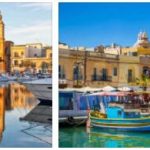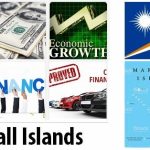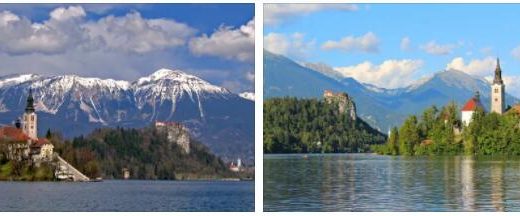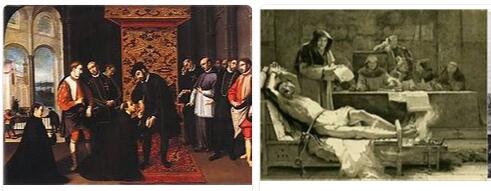Malta Economy Facts
Economical overview
Malta’s economy is heavily dependent on trade with the outside world. The islands lack their own natural resources, agriculture is relatively insignificant and virtually all raw materials have to be imported. Malta also has a limited domestic market. But to be a small country, the economy is relatively well developed. Unemployment is low, as is inflation.
The country’s main asset is its location in the middle of the Mediterranean; tourism is the single most important industry. The tourism industry accounts for about one third of gross domestic product (GDP) and is the country’s main single source of foreign currency.
- Countryaah.com: Major imports by Malta, covering a full list of top products imported by the country and trade value for each product category.
The export industry generates more money than tourism in total, but there is usually a significant deficit in goods trade abroad as imports are much larger than exports. In recent years, however, the deficit in commodity trade was offset by growing service exports, tea x finance and insurance operations and shipping registers, see below. Since 2011, the so-called current account balance (trade in goods and services) has been positive.
In addition to tourism and industry, finance and insurance are the most important economic sector. Unlike the crisis banks in neighboring Italy, Malta’s banking sector is stable.
Malta also receives significant revenue from foreign vessels that have opted to register in Malta offering favorable terms. Thus, the country has been able to build up Europe’s largest merchant fleet. Following criticism from trade unions and the EU, the authorities have removed many vessels with poor working conditions from their registers. The Agency for Malta’s Ship Register stated in 2015 that the number of merchant ships sailing under the Maltese flag has increased to 2500. This makes it the sixth largest merchant fleet in the world.
The public sector is relatively large, although it has been sharply cut since the 1980s when over half of all Maltese were public employees. A large part of the state’s revenue then came from high tariffs. During the 1990s, the government gradually began to liberalize the economy, which was a requirement of the EC (now the EU). The influence of the state in the business sector was reduced, trade was liberalized and private enterprise was encouraged. Several laws have been passed to attract foreign investors to the country.
- Abbreviationfinder.org: Check this abbreviation website to find three letter ISO codes for all countries in the world, including MLT which represents the country of Malta. Check findjobdescriptions to learn more about Malta.
The transformation of the economy led to high GDP growth until the late 1990s. At the same time, inflation and unemployment were kept down.
Private consumption was relatively low in the early 2000s. Together with a limited domestic market and uncertainty in the tourism industry, it created question marks about Malta’s economic development ahead of the EU accession in 2004 and its accession to EU currency cooperation EMU. Three years later, however, private consumption had again risen as more jobs were created and income taxes lowered. All in all, this led to increased GDP growth and improved government finances. In July 2007, EU finance ministers were able to adopt Malta as an EMU member and in January 2008 the euro was introduced as the country’s currency.
In 2003, Malta had a budget deficit of close to 10 percent. As a future EU member, the country received a warning from the EU that the deficit was well above the 3 percent agreed by the EU Stability Pact and which was the limit for entry into the EMU Pact. Also, Malta’s national debt, which in 2004 corresponded to 72 percent of GDP, exceeded the EU’s limit of 70 percent. In a few years, the government managed to get the finances organized by, among other things, increased VAT and more efficient tax collection. The budget deficit was down to 2.2 percent in 2007, but increased to 3.6 percent in 2010 and then to be improved again for the years 2012-2014 to be between 2 and 3 percent. In 2015, the deficit was 2.6 percent and the forecast for 2016 was even more favorable – only 1.2 percent.
Government debt shrank to just over 60 percent of GDP during the second half of the 1990s. The debt then increased again and stood at around 67-72 percent of GDP in 2011-2015, which was relatively less than the crisis of EU economies such as Greece and Italy.
Growth from 2002 was growth of just over 2 percent per year until 2008 when Malta was included in the aftermath of the international financial crisis. In 2009, growth fell by 2.8 percent, but the decline was short-lived. Already the following year, the economy began to recover and growth was again positive. During the years 2013-2015, growth improved steadily, according to the World Bank, which predicted growth of 3.6 percent in 2016.
FACTS – FINANCE
GDP per person
US $ 30,075 (2018)
Total GDP
US $ 14 542 million (2018)
GDP growth
6.6 percent (2018)
Agriculture’s share of GDP
0.9 percent (2018)
Manufacturing industry’s share of GDP
8.8 percent (2018)
The service sector’s share of GDP
75.0 percent (2018)
Inflation
1.7 percent (2019)
Government debt’s share of GDP
45.2 percent (2018)
Currency
Euro
Assistance per person
28 US dollars (2002)













